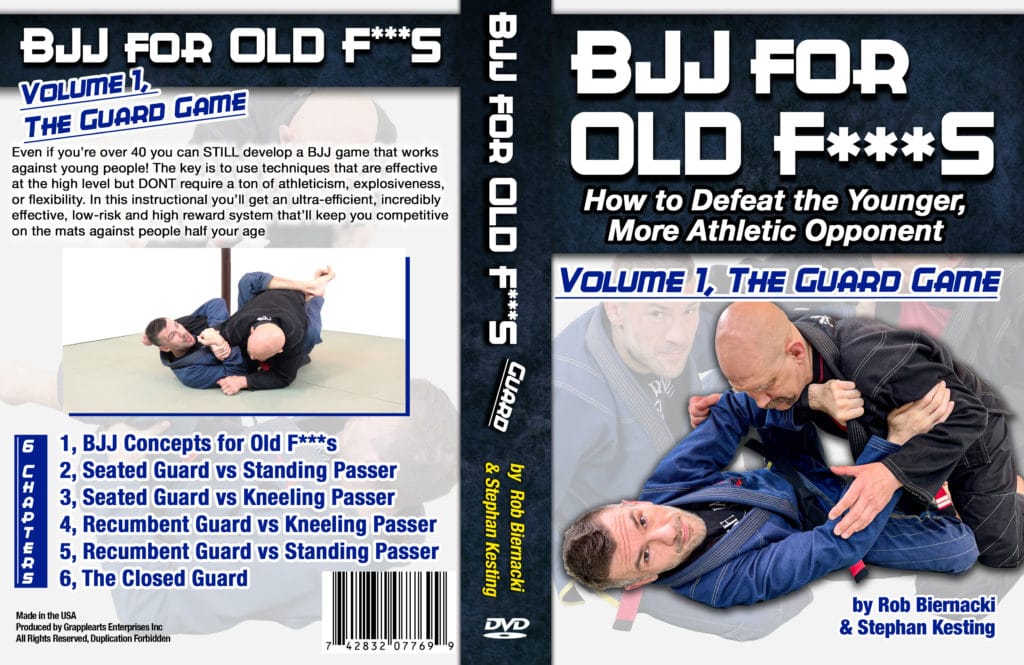You often hear about elbow-knee connection in BJJ, but what does it mean and, more importantly, how will it help you?
To finalise a guard pass, your opponent must invade the space between your elbow and knee to gain control of your torso.
Elbow-knee connection involves keeping your elbow touching your knee when you’re in guard. This denies him the space he needs to effectively pass your guard.
Here’s a short video featuring Rob Biernacki and myself taking you through the concept of elbow-knee connection and how to train it using a simple drill.
Let’s quickly review some of the main concepts covered in the video above.
By the end of this article, you should have a much better understanding of this incredibly important concept and how to use it to make it much harder for your opponent to pass your guard.
Elbow-Knee Connection on the Bottom
To pass your guard your opponent needs to invade the space beside your torso and between your elbow and your knees. Keeping your elbow and your knee connected blocks him from getting into that space.
Furthermore, keeping your elbow connected to your knee makes it harder for your opponent to use your arm and leg as levers to move you around.
Here’s what this might look like in guard retention phase of the open guard…
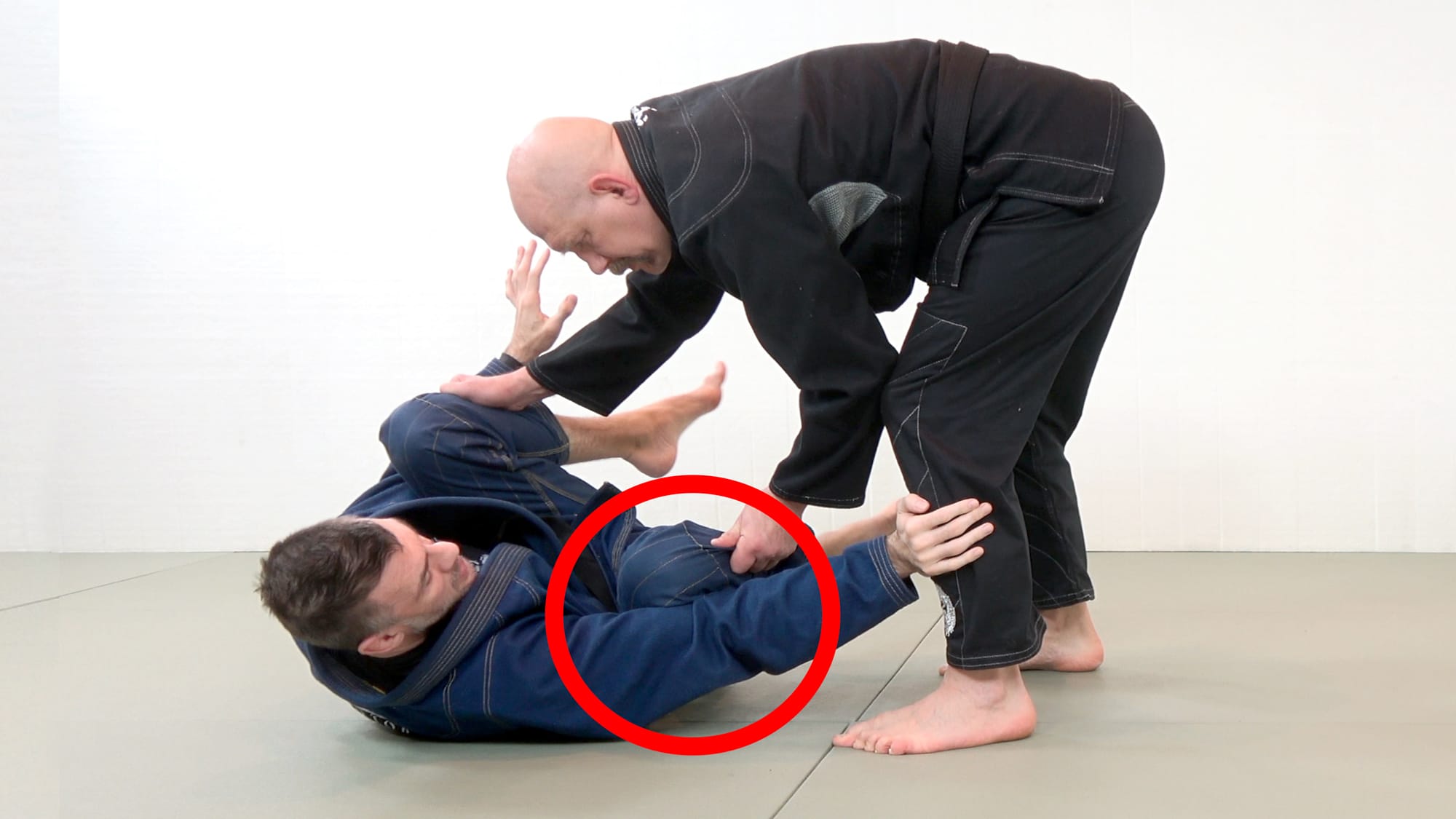
Maintaining Elbow-Knee Connection While Framing Against the Opponent’s Leg
If your opponent is threatening to move past your legs it’s a very natural reaction to reach out and use your arm as a frame against his leading edge, which is often the shin or the knee (as in the photo below).
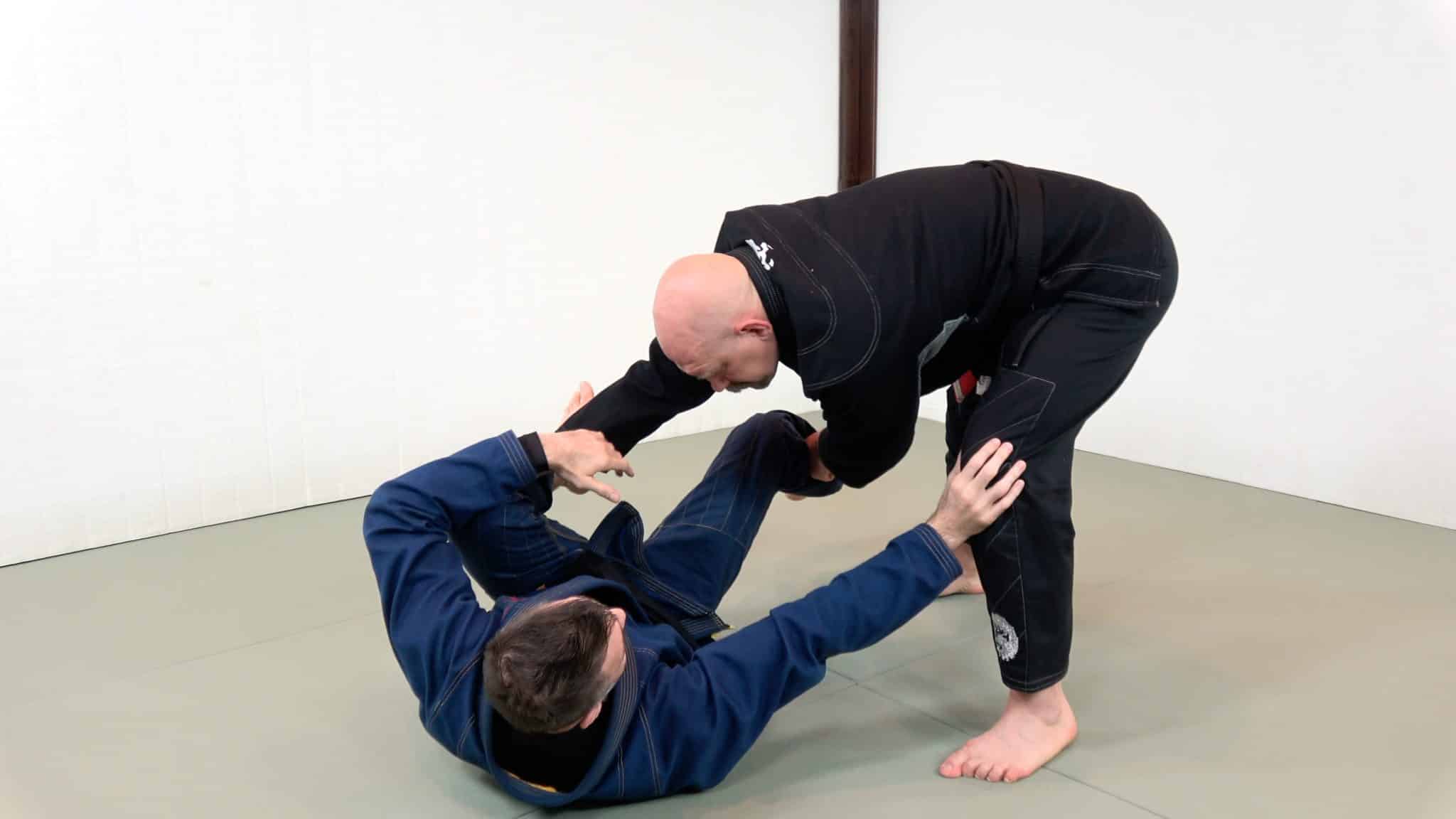
Allowing the knee-elbow space to open up…
Extending the arm like this can be problematic because now you’re breaking elbow-knee connection which creates a hole in your defensive structure.
In this example the guard passer can now simply step his right leg (the leg you’re not blocking) into the space next to your hip to achieve knee mount.
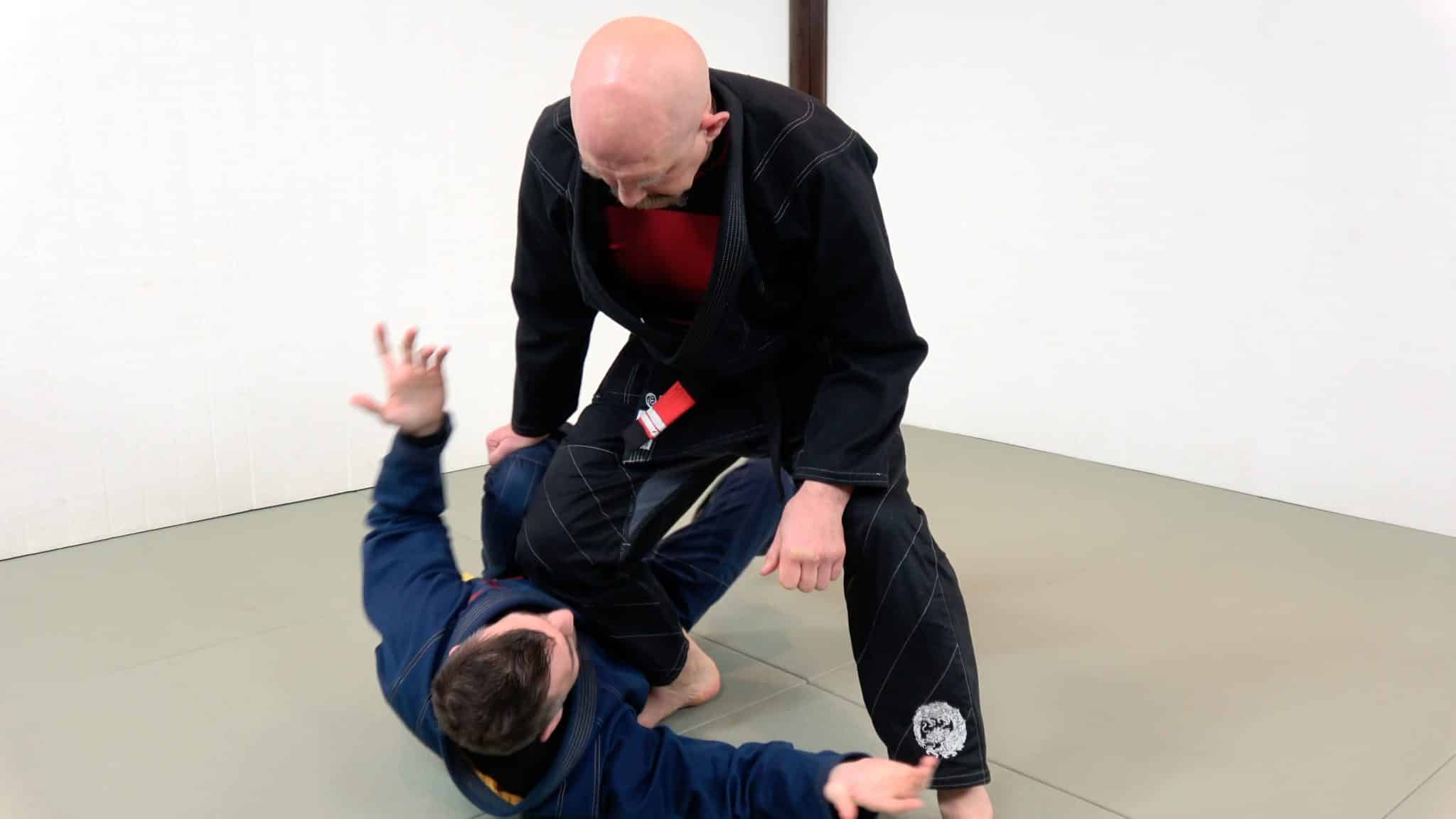
…Provides a route for the guard passer to get to knee mount, side control, or full mount.
To make this positioning instinctive it’s worth doing a drill in which the top player practices spinning the bottom man from side to side, and the bottom man practices maintaining elbow-knee connection while reaching out to frame against the ankle, shin, or knee.
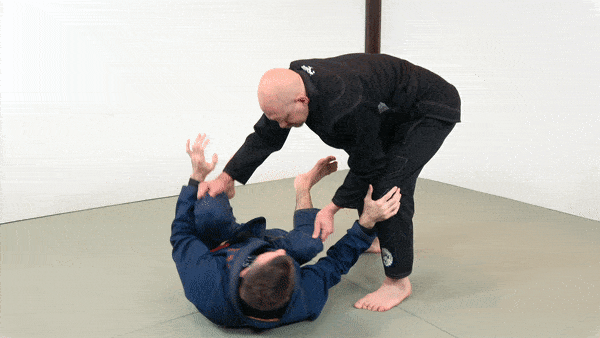
Basic Elbow-Knee Connection Drill
This is a counter-intuitive position at first, but I think you’ll find it very useful after you’ve drilled it a bit and consciously incorporated it into your sparring.
Elbow-knee connection is important when you’re playing from the bottom, but it’s also only one tool in the toolbox. There are other guard retention strategies you can and should be using depending on the specifics of the situation.
Elbow-Knee Connection On the Top
The main emphasis of this article has been the role of elbow-knee connection in guard retention when you’re on the bottom, but this concept also applies when you’re on top.
When you’re in someone else’s guard a useful heuristic is to not allow him to plant a foot anywhere on your torso, and especially not in the creases of your hip and shoulder.
Therefore, if you’re between your opponent’s legs, it can be very useful to connect your elbows to your legs and form a wall that keeps his feet off your body. This is essentially the same elbow-knee connection we were talking about in a guard retention context earlier.
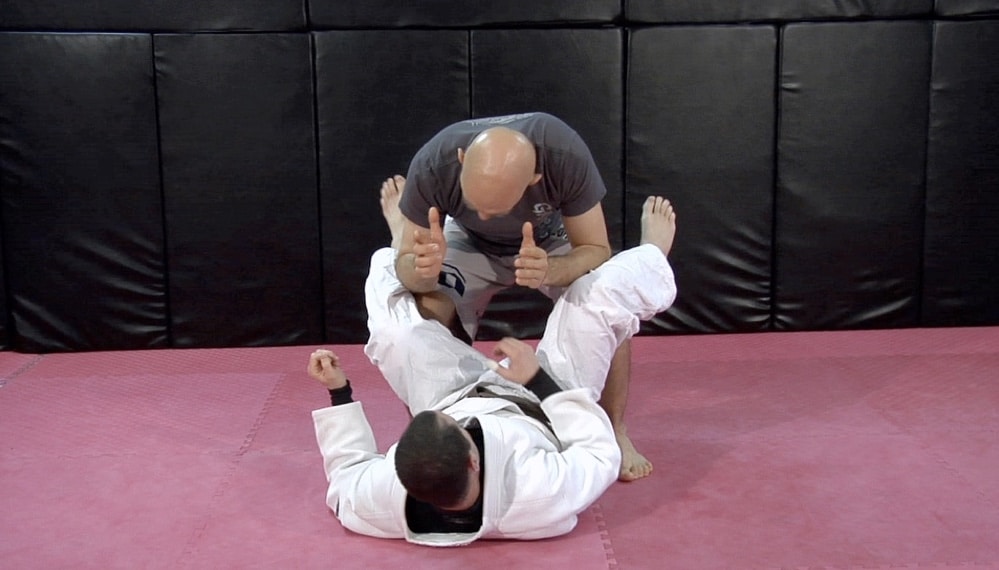
Maintaining elbow-knee connection inside the guard
With his feet on your torso he effectively controls the distance as well as having a very strong purchase point to tip you backwards with a wide variety of sweeps.
In the photo below you can see how my opponent has combined a foot on my hip with a pull on my wrist to break my posture forward, putting me into a very compromised position. This is no good!
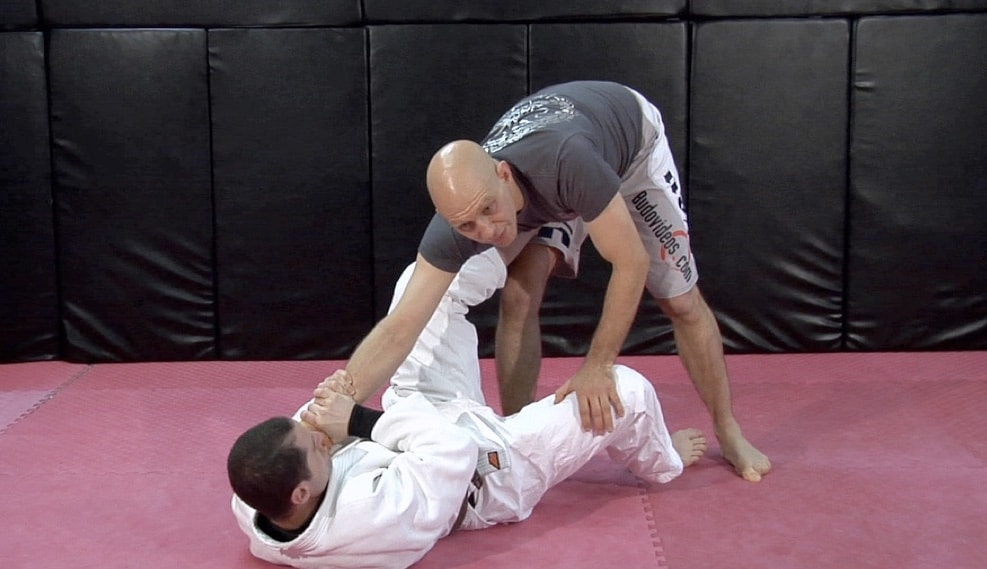
Failure to maintain elbow-knee connection in the guard
This breakdown of the elbow-knee connection and how to drill it comes from the BJJ for Old F***s instructional with Rob Biernacki and myself.
It is available in app, online streaming and DVD formats and comes with an unconditional 365 day moneyback guarantee.
Jiu-Jitsu Techniques, Strategies and Training Methods for Older Grapplers
The Grapplearts instructional – BJJ for Old F***s – has a TON of solutions for older grapplers, including…
- How to establish control over an younger guy trying to sprint, dance and dive around your guard
- Strategies to beat faster opponents by setting them up so you can predict exactly what they’re going to do… and then beat them to it
- An extensive, very efficient, but low-energy guard retention system (in Volume 3)
- The exact training methods and drills you can do that’ll allow you to get better as fast as possible, with a much lower chance of injury
- Sweeps that are very high percentage but require almost no athleticism
- Submissions that’ll tap out the young studs but won’t put you in a compromising position if everything goes wrong
- And a ton of other techniques and strategies learned from decades of hard-won experience on the mats. We’ve suffered and broken ourselves so that you don’t have to!
Check out BJJ for Old F***s. I will say without reservation that it’s really good and will definitely improve your effectiveness and longevity on the mats if you’re age 40 or older!
Stephan Kesting
The post Elbow-Knee Connection in BJJ, And How to Develop It. appeared first on Grapplearts.

